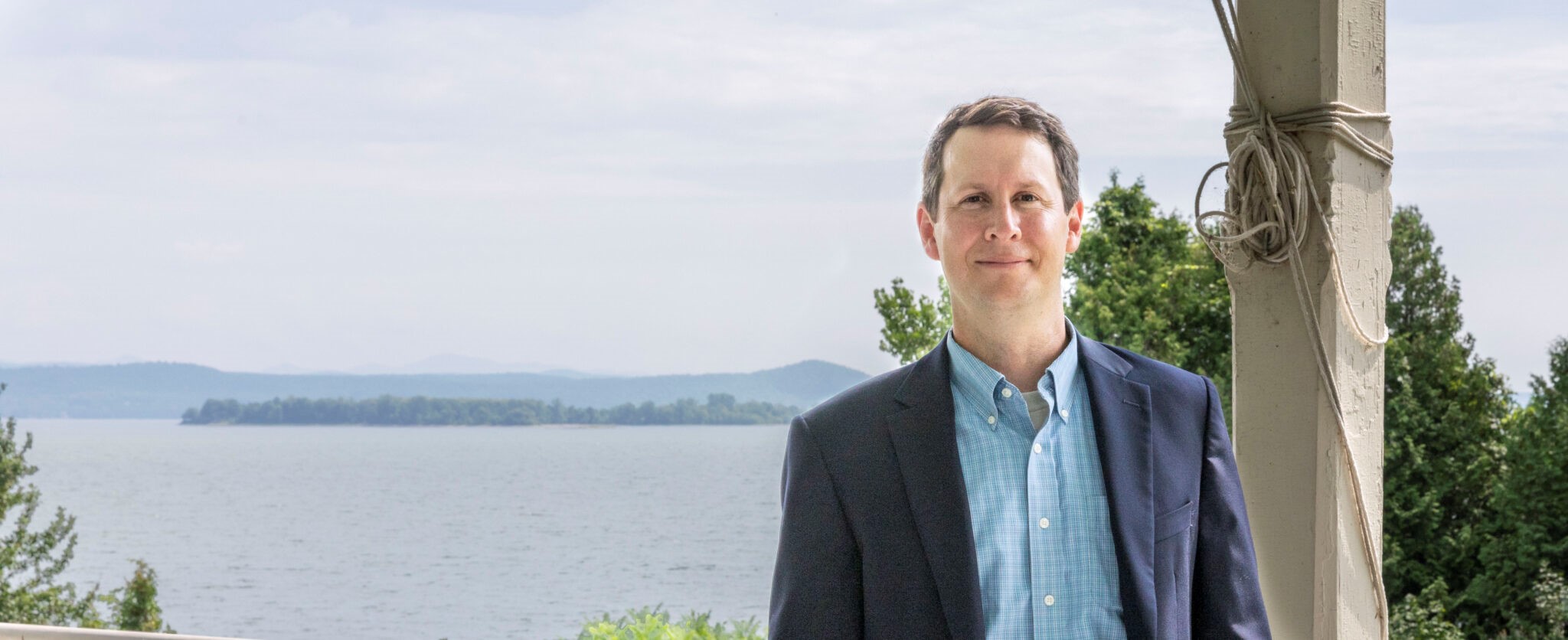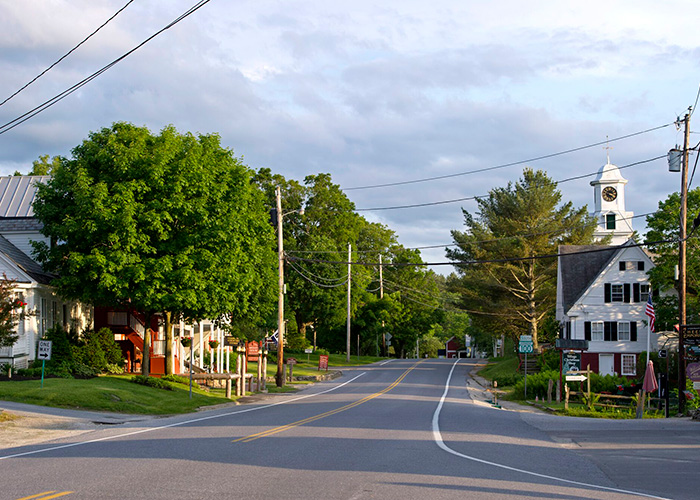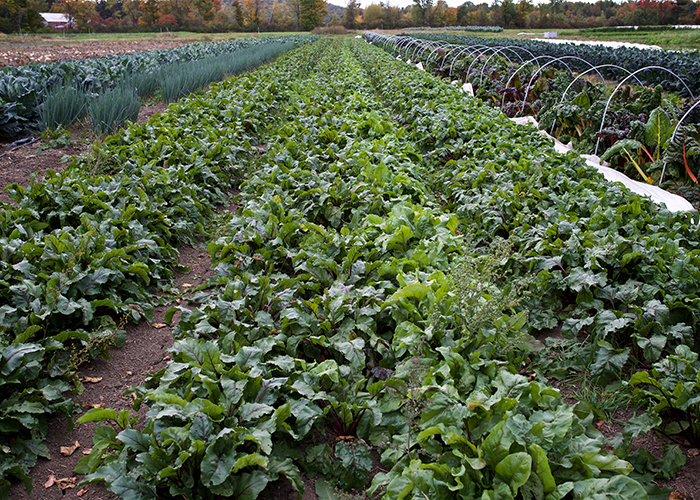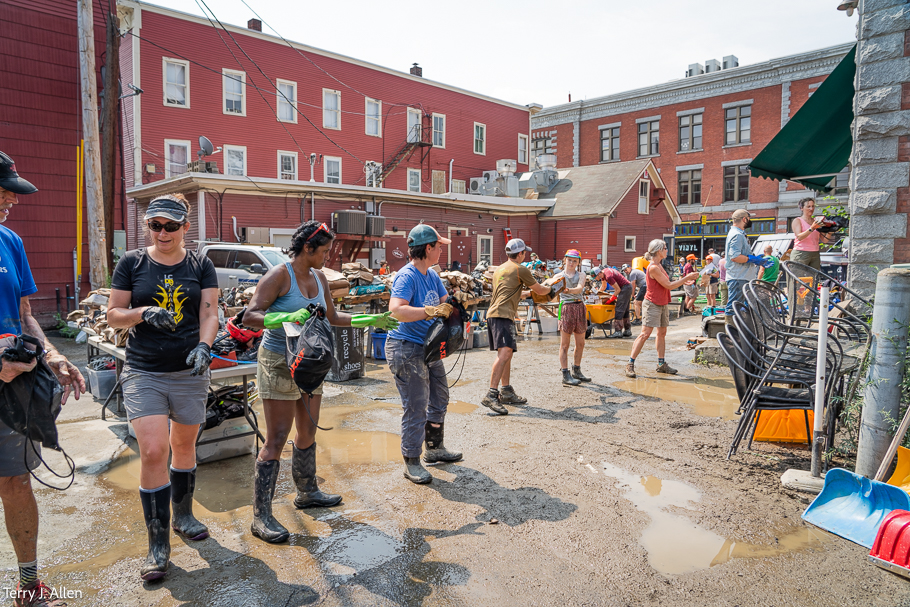YOUR NAME and TITLE: Ben Doyle, President
YOUR ORGANIZATION: Preservation Trust of Vermont
YEAR YOU JOINED ORGANIZATION: 2020
MONTH/YEAR YOU WERE APPOINTED TO CURRENT POSITION: October 2020
What makes you hopeful for the future?
The past. Vermont sometimes has a reputation of being frozen in time, but I don’t think that story holds up. Vermont, and rural America in general, has always been a dynamic place that has adapted both economically and culturally to the needs of the moment. At PTV, we work with communities to navigate and embrace change while preserving the buildings and places that manifest their values. Spaces where Vermonters (including new ones) can come together to build a shared community are particularly hopeful.
I’m also inspired by kids and pets wandering into Zoom calls at work.

What’s the most challenging part of your work currently?
Not being out in the field. The best part of this job is meeting with people in the buildings and communities they love. We tour old barns, crawl around in basements, visit over coffee at a general store. I don’t think there’s anything I enjoy more than visiting with folks at a spaghetti supper in a small town and hearing about what’s important to them. While it’s been great to find new ways to meet with people on Zoom, in-person connection is something I think all of us are craving.
How have you changed as a leader in the last six months?
I think everyone’s horizons have broadened. I don’t hear too many people saying “when we get back to normal” anymore. There is a recognition that parts of our world need to change and that the circle of who makes decisions in a community needs to widen. I’ve always tried to listen well, but that’s something I plan to double down on moving forward.
What are you prioritizing?
Supporting Vermont’s historic villages and downtowns. These are the places where Vermonters come together to meet their neighbors, engage in commerce, participate in civic life. The pandemic is challenging them in a variety of ways: by preventing us from gathering or by accelerating online shopping trends that export local wealth. Our villages and downtowns are where we’ve invested in infrastructure, both physical and cultural, and so anything we can do to preserve that investment and leverage it coming out of the pandemic is critically important.
How do you see your relationship with your constituents evolving over the next five years?
PTV is committed to preserving the essential character of Vermont. I’m excited and fascinated by the questions that work prompts all of us to ask. What is it about this place that we love? How do the buildings we care for tell the story of who we are or who we aspire to be? I believe in the coming years many people will find their way to Vermont, by chance or by choice, and so the conversation with our constituents needs to be expansive and celebrate the dynamism that will come with it.
How can cultural institutions and organizations participate in the current call for creating a more diverse, equitable, and inclusive world?
Any kind of public or philanthropic investment is grounded in values and reflects a point of view. I think cultural institutions are uniquely positioned to help surface those values and deeply examine them. If we start with the aspiration that every Vermonter should feel welcome and have the ability to equitably participate in the life of their community, then the stories we tell, the art we celebrate, the buildings we save, should honor that ideal.
What are some lessons learned or advice that you can share with other organizations who are grappling with the multi-faceted challenges of this time?
I love Flannery O’Connor’s idea that “everything that rises must converge.” The experience of the pandemic has revealed the extent to which “multi-faceted challenges” are connected. That’s why I’m inspired by cultural organizations thinking about food access. Economic development agencies thinking about equity. Historic preservation that thinks about the future. The more we approach our challenges as connected ones, the more successful we will be in finding solutions.
Anything else that you’d like to add?
I’m continually inspired by the local leadership I see everyday. People who don’t necessarily see themselves as leaders or changemakers, but are working hard to help their neighbors and create a community of care. It’s these people, performing individual acts of service and kindness, who make Vermont a wonderful place to call home.
This story by the Vermont Arts Council originally appeared at https://www.vermontartscouncil.org/blog/steering-the-ship-a-qa-with-vermonts-cultural-leaders-ben-doyle/. Photo by Jude Domski.




